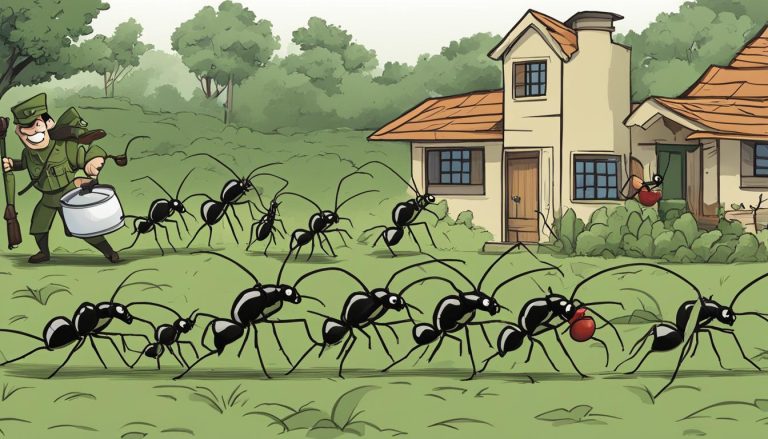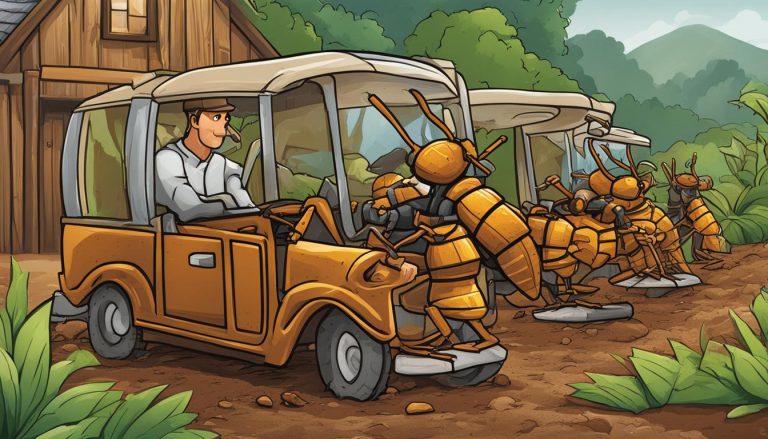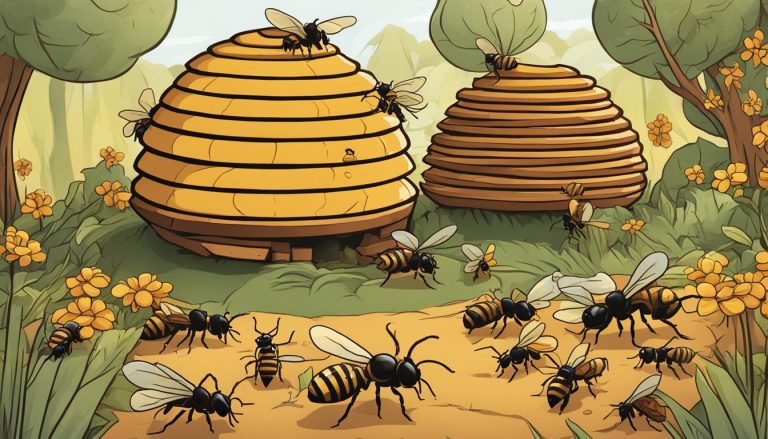G’day! Ever wondered why you get uninvited tiny guests running around your kitchen bench or floors? Yep, we’re talking about ants. Well, you’re not alone. Loads of Aussies have the same issue. Let’s have a squiz at what causes ant problems at home.
These little fellas belong to a massive family with thousands of species and they’re everywhere. Just a tiny bit of food, and they’ll come marching in, because finding food is their job in the wild. When the weather heats up, ants get busy, and that’s when they’re more likely to pop by our homes too.
But it’s not just about the weather. When it gets super wet or there’s not much water around, ants might come looking for shelter and a drink in your house. Plus, your home is like a five-star hotel for ants, with all the yummy crumbs and cosy spots to nest.
Key Takeaways
- Ants pop up in our homes searching for food – a speck is enough.
- Warm weather gets ants moving and shaking.
- When it’s too wet or dry outside, ants come inside.
- They love your home for food and a nice place to live.
- Figuring out ant infestation causes is the first step to saying ‘Hooroo!’
- Knowing identifying ant problem causes helps keep your home ant-free.
Understanding Ant Behaviour and Habitats
To effectively tackle ant issues in our homes, it’s important to understand the inner workings of these tiny creatures. Ants in house causes range from seeking out food to looking for a safe environment. They’re not just unwanted house guests; they’re part of a sophisticated and highly organized social structure, living in colonies that can be astoundingly populous.
The core reason why ants invade homes is rooted in their survival instincts. Ants communicate with each other using pheromone trails—a chemical marking system that guides fellow ants to food sources. This invisible highway is why you might see long lines of ants marching towards the tiniest splash of juice on your counter.
It’s fascinating how ants are designed to protect their queen—the heart of their colony. Certain species have ‘storage ants’ that can neutralize threats, which allows the rest of their community to thrive unhindered. Despite the inconvenience they cause, we must remember that ants do play an essential role in our ecosystem, participating in activities like waste decomposition and seed distribution.
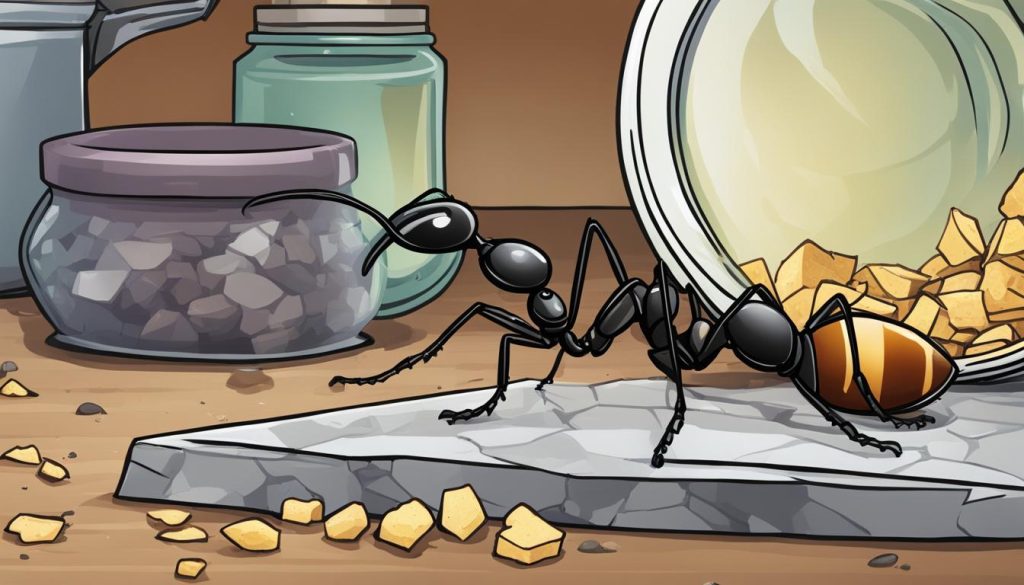
Let’s explore some of the common causes of ant issues to better understand what attracts these industrious insects to our households:
- Cracks or gaps in walls, windows, and foundations provide entry points for ants.
- Access to food, especially sugary or protein-rich residues, is a primary attractant.
- Excess moisture or standing water from leaks and spills is a call to action for thirsty ants.
- Unsecured garbage and pet food containers present a feast for foraging ants.
| Ant Attractant | Reasons for Attraction | Preventive Measures |
|---|---|---|
| Food Spills | Ants are attracted to easily accessible food sources. | Regular cleaning and storing food in airtight containers. |
| Moisture | Water is necessary for ant survival. | Fixing leaks and ensuring dry surfaces. |
| Shelter | Ants seek out safe spots to establish their colonies. | Sealing cracks and gaps around the house. |
| Natural Habitat Disturbance | Landscaping or construction can displace ants, driving them indoors. | Maintain a tidy garden and be aware of potential ant nests during outdoor work. |
In conclusion, tackling ant invasions starts with identifying the common causes of ant issues and taking preemptive steps to make our homes less appealing. Simple actions like sealing up entry points, maintaining cleanliness, and securing food can stave off these unwelcome critters.
What Causes Ant Problems?
In understanding the factors contributing to ant problems, we must take into account the environment we provide that is conducive to their livelihood. Let’s delve deeper into the reasons behind ant infestations and discover how to prevent ant problems efficiently.
Seasonal Changes and Your Home’s Appeal
When the sunny season kicks in, so does ant activity. Australia’s summers create the perfect climate for ants to seek out new locations for food and nesting. Your home, with its plentiful resources, becomes a top destination for these persistent invaders.
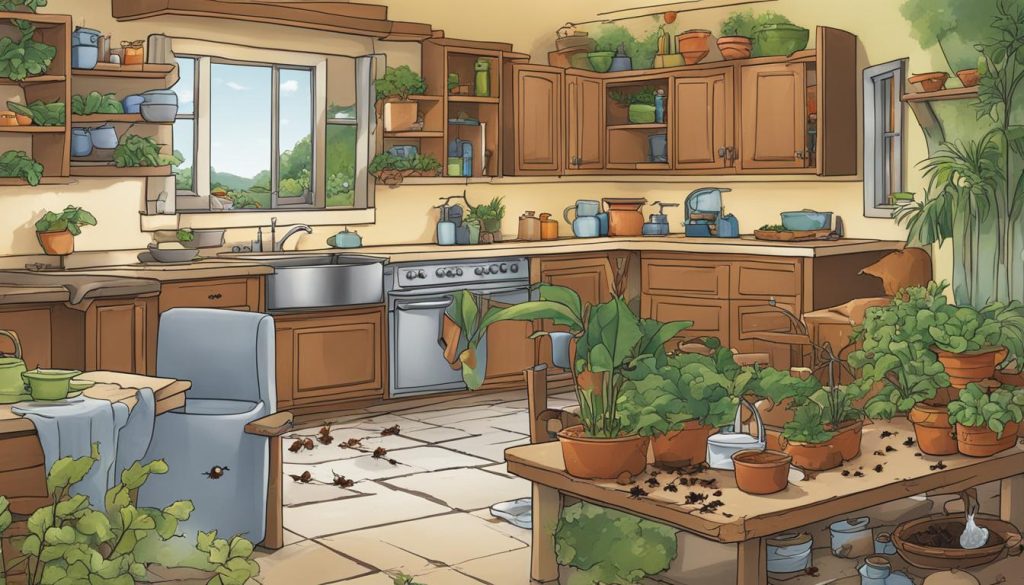
Ants’ Relentless Search for Food and Water
Regardless of the menu, ants aren’t fussy. They’re attracted to anything from a drip of honey on your counter to the bits of kibble in your pet’s bowl. Their excellent foraging skills are at the heart of common causes of ant issues in domestic spaces.
Cooperation Among Ants: How They Organise and Invade
The unparalleled teamwork amongst ant colonies allows them to establish strongholds rapidly. Identifying ant problem causes can lead to strategic interference with their communication paths—those invisible pheromone trails—to prevent further infestation.
| Ant Problem Factor | Reasons | Prevention Tips |
|---|---|---|
| Food Sources | Accessible sustenance attracts ants | Clean spills immediately, store food securely |
| Moisture | Ants need water to survive | Fix leaks, ensure good drainage around the home |
| Shelter | Cracks and crevices serve as entry points | Seal gaps in walls and foundations |
| Nesting Sites | Quiet, undisturbed areas encourage colonization | Regularly disturb potential nesting sites, use ant baits |
| Temperature | Warmth activates ant activity | Maintain a cooler indoor environment when possible |
By tackling these common causes of ant issues and implementing strategic methods on how to prevent ant problems, you create a less inviting environment for ants and keep your home secure from these tiny yet determined intruders.
Conclusion
Wrapping up, addressing ant invasions in your home comes down to two key things: comprehension of ant dynamics and tackling the elements that contribute to ant problems. Keeping your living space clean is vital. Crumbs and spills should be cleaned promptly, and bins secured to deter these persistent foragers. Also, inspect your home for any cracks or small openings and seal them up to deny ants entry. Don’t overlook the great outdoors – an unkempt yard can be an invite for ants to set up camp close by.
Even with the best practices in place, sometimes the ant issue can escalate beyond DIY solutions. In such instances, calling in experts in pest control is your best bet. They bring in their know-how to effectively manage and sustain a bar against future invasions using treatments that have a more lasting impact compared to everyday products.
So, remember, maintaining an ant-free home is an active process. With consistent effort and swift action, you can prevent ant problems from ever becoming a full-blown infestation. As with many things, a bit of awareness and regular house upkeep go a long way in keeping your home free from these little intruders. Stay alert and act immediately on any signs of an ant influx to keep your abode comfy and critter-free!
FAQ
What are the primary causes of ant problems at home?
The primary causes include readily available food sources, excess moisture, and shelter that our homes inadvertently provide. Ants are also driven indoors by extreme weather conditions and will take advantage of any opportunity to establish a colony in a safe, warm environment.
Why do ants invade homes?
Ants invade homes in search of food, water, and shelter. Our homes offer a plentiful supply of food scraps, sugary spills, pet food, and water sources which are attractive to ants. Cracks and crevices also provide perfect entry points for these tiny creatures to come inside.
How do seasonal changes affect ant infestations?
Seasonal changes, particularly the warmer months, significantly increase ant activity. Ants are cold-blooded and are more active when the temperature is warmer, making households more prone to invasions during these times due to the enhanced ant activity.
What makes ants so relentless in their search for food and water?
Ants are hardwired to scavenge for sustenance to support their colonies. A single ant can communicate the location of a food source to the rest of the colony using pheromone trails, leading others to the site efficiently. Their social structure makes their search systematic and relentless.
How do ants organise and invade homes?
Ants exhibit cooperative behaviour and are highly organised. They use pheromone trails for communication and to direct other ants to food sources. The colony works collectively to exploit resources, which makes their invasion tactics highly effective and systematic.
How can we identify the causes of ant problems?
Identifying causes of ant problems involves inspecting for potential food sources, moisture areas, and entry points. Look for ant trails, nests, and examine areas where food is stored or prepared. Also, check for damp areas, as ants are attracted to moisture.
How can we prevent ant problems?
Preventing ant problems involves maintaining cleanliness to remove food attractions, sealing entry points, controlling moisture by fixing leaks, and ensuring yard maintenance to keep the outdoor area less appealing for ants to nest near the home.

